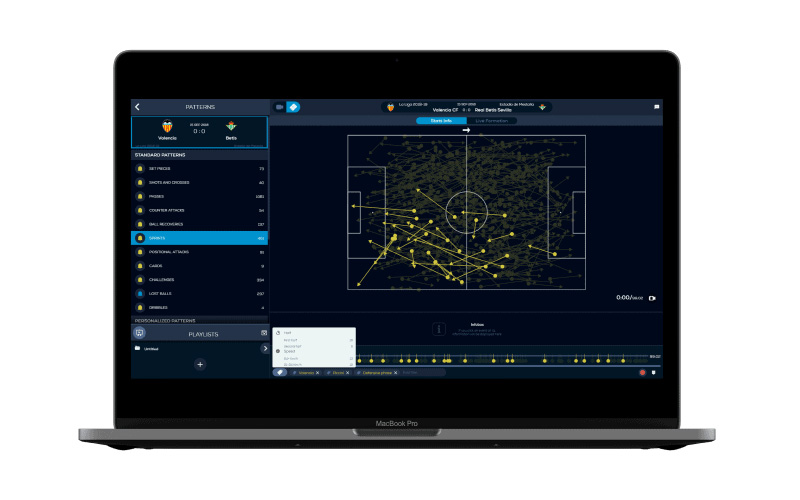
How Football Data Analysis Transforms the Game
Football Data Analysis is crucial in enhancing our understanding of the game, influencing decisions, strategies, and player selection at all competition levels. Technology has provided teams, analysts, and fans with extensive data, allowing them to interpret and utilize insights into team performance, player potential, and effectiveness on the pitch. By examining player movements, tactical formations, and match statistics, stakeholders can identify previously unseen trends and patterns. As we explore football data analysis, we will discuss its definition, significance, key metrics, benefits, and its ongoing impact on the future of football.
The Role of Technology in Football Data Analysis Collection
At the heart of football data analysis lies technology, which serves as the driving force behind data collection and interpretation. The marriage of technological innovations and football analytics has revolutionized how teams gather, store, and analyze data yo88.forum.
Technological advancements have allowed for a level of granularity and depth previously unimaginable. Devices such as GPS trackers, video analysis software, and drones have become integral components of modern football operations. As technology continues to evolve, so too does the capacity for clubs to extract meaningful insights from vast quantities of data.
Tracking Systems: Capturing Movement and Performance
One of the most significant breakthroughs in football data collection comes from player tracking systems. High-definition cameras paired with sophisticated algorithms capture player movements continuously throughout a match. This data provides insights into positional play, distance covered, and even fatigue levels over the course of a game.
The application of tracking data allows teams to analyze player behavior in real-time. Coaches can monitor how players position themselves during various phases of play, identifying areas for improvement. For example, if a forward tends to drift too far wide during attacking phases, intervention can be made through targeted training sessions.
Moreover, tracking data facilitates the assessment of team shape and structure. Analysts can visualize how a team maintains its formation under different match scenarios, identifying whether players adhere to tactical guidelines. Such insights enable coaches to fine-tune their strategies, fostering better teamwork and collective understanding.
Video Analysis: Breaking Down Match Footage
Video analysis has become an indispensable element of football data analysis. Coaches and analysts leverage match footage to dissect performances, allowing them to visualize patterns that may not be evident through metrics alone. Video platforms offer the capability to tag specific events, such as goals, assists, or defensive errors, creating a treasure trove of data for review.
Furthermore, video analysis aids in post-match debriefings. Coaches can present clips to players, highlighting both successful actions and areas requiring improvement. This visual feedback not only reinforces tactical concepts but also catalyzes discussions among players regarding decision-making.
Additionally, the advent of automated video capture systems has streamlined the process for coaches. These systems can track and analyze entire games automatically, saving time and enabling staff to focus on interpretation rather than data collection. The accessibility of such technology ensures that all clubs, regardless of budget, can benefit from video analysis.
Data Management Solutions: Organizing Insights for Accessibility
With the vast quantities of data generated each match, data management solutions play a pivotal role in organizing and interpreting insights. Cloud-based platforms allow clubs to store data securely, ensuring that it remains accessible to analysts, coaches, and other stakeholders.
User-friendly interfaces facilitate the exploration of data sets, allowing analysts to execute queries that yield specific insights. This access enables real-time monitoring of player performance during matches, offering immediate feedback for tactical adjustments. Moreover, integrated systems that combine various metrics streamline the analysis process, eliminating the need for manual data entry.
As technology advances, the integration of artificial intelligence and machine learning into data management systems promises to enhance predictive capabilities. Predictive models can forecast player performance trends based on historical data, guiding future decisions on training, transfers, and match strategy.
By harnessing technology effectively, clubs can optimize their data analysis processes, transforming raw data into actionable insights that drive success on the pitch.
Conclusion
The realm of football data analysis is a testament to the marriage of tradition and innovation in the beautiful game. As we have explored, the importance of data analysis transcends mere numbers; it unlocks the secrets of the game’s complexities, enhancing player development, tactical planning, and overall team performance.
The evolution of football analytics has introduced a wealth of metrics that provide crystal-clear insights into player and team dynamics. Coupled with the advancement of technology, the capacity for clubs to gather, interpret, and act upon data continues to expand. Through effective collaboration between coaches and analysts, teams can bridge the gap between qualitative insights and quantitative metrics.
